Head-To-Head: Dell Venue 11 Pro Vs. Microsoft Surface Pro 2
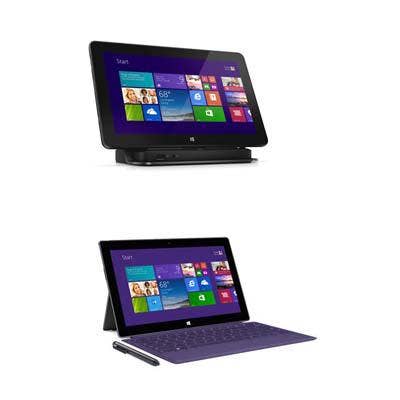
Dell Enters Tablet Venue
Just two days after Microsoft took the wraps off its refreshed tablets -- the Surface 2 and Surface Pro 2 -- Dell on Wednesday unveiled Venue 11 Pro, one of a slate of new tablets that will compete not only with Microsoft's high-end Windows tablets but also with devices running Android and Apple's iOS. We'll get to those latter devices in due course. For today, the CRN Test Center compares features and specifications of Dell's new Windows tablet with those of Microsoft's latest high-end entry.
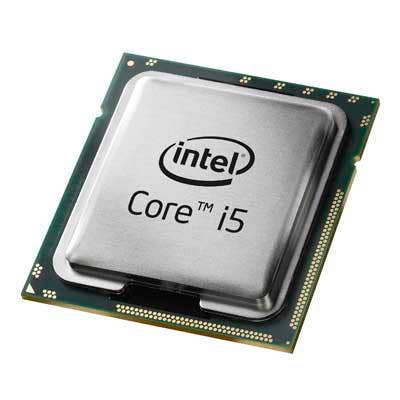
CPU And RAM
The Surface Pro 2 will contain a fourth-generation Intel Core i5-4200U dual-core 1.6GHz processor with 4 or 8 GB of RAM. For the Venue 11 Pro, Dell will offer a choice of Intel processors to best suit the intended use; all are 64-bit and most are also Haswell. On the low end are the Atom Z3770 1.4GHz quad-core and the Pentium 3560Y 1.2GHz dual-core Bay Trail processors. For more demanding applications, Dell offers models with the 1.5GHz Core i3 4020Y, the 1.5GHz Core i5 4210Y and the 1.6GHz Core i5 4300Y, all of these are two-core/four-thread Haswell parts that can address as much as 16 GB of RAM. However, the Venue 11 Pro itself is offered with a maximum of 8 GB.
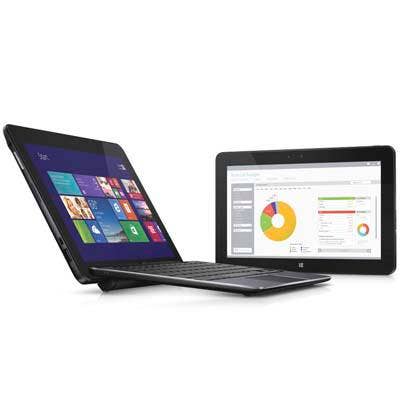
Graphics And Storage
Microsoft's latest high-end tablet drives its full-HD display with the Intel HD Graphics 4400 GPU that's baked into the CPU. This portion of the processor runs at speeds between 200MHz and 1GHz. All three of Venue's high-end Haswells have the Intel HD Graphics 4200 GPU, which runs at the same 200MHz base frequency but tops out at 850MHz. The 4200 and 4400 GPUs both include 20 execution units (cores) for graphics processing. Dell's Atom- and- Pentium-based Venue models contain Intel HD Graphics, which deliver 10 execution units at a fixed clock rate of 311MHz.
As for storage memory, the Surface Pro 2 and Venue 11 Pro (pictured) are available with 64, 12 and 256 GB of solid-state storage. Microsoft adds a 512-GB model; Dell offers one with 32 GB. Either way, we suggest visiting Microsoft's warnings about device storage requirements of Windows itself.
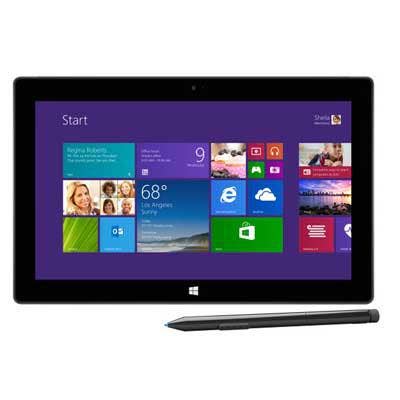
The Display
Surface Pro 2 (pictured) faces the world with a 10.6-inch IPS panel that puts out 1,920-x-1,080 pixels. That's a pixel density a hair shy of 208 pixels per inch. Dell's 10.8-inch IPS display offers the same 1,920-x-1,080 resolution, which puts its pixel density at close to 204 ppi. Both are equipped with 10-point capacitive touch capability.
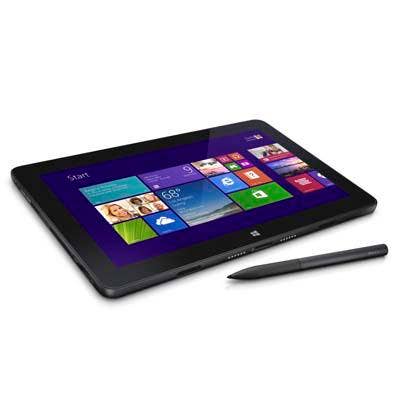
Dimensions And Controls
The Surface Pro 2's charcoal-colored metal case is 10.8 inches long by 6.8 inches wide and slightly more than a half-inch thick. Dell's Venue 11 Pro is shrouded in a black polycarbonate (plastic) case with removable back (and battery). It measures 11.7 inches long by 7 inches wide. Depending on configuration, Venue's thickness ranges from 0.4 to 0.6 inches. Surface Pro 2 tips the scales at a full 2 pounds. Venue 11 Pro's (pictured) weight is a relatively svelte 1.6 to 1.8 pounds, depending on the model. External device controls are about the same. Both have power and volume buttons, a headset jack, dual mics and speakers, and a dedicated "home" button.
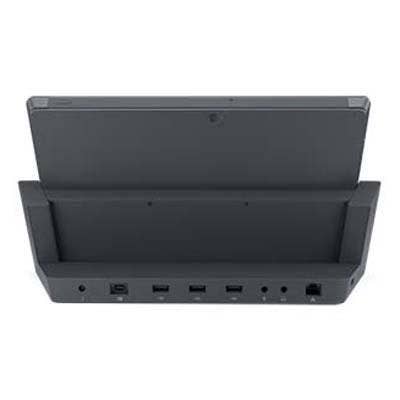
Ports, Cams And Connectors
The most substantive difference between Microsoft Surface (pictured) and Dell Venue tablets is the power connector. Microsoft offers a magnetic connector that pops off harmlessly at the slightest tug, but otherwise remains firmly in place. Dell has opted for a micro-USB-style connector for charging. While this is probably an improvement over the straight canon plug seen on many of its other devices, it's still quite vulnerable to stress-related damage and malfunction.
In terms of ports and I/O, Surface Pro 2 and Venue 11 Pro are about the same. Both include one full-size USB 3.0 port and a Micro-SD card slot that reads SD, SDXC and SDHC formats. Both support the addition of as much as 64 GB of additional device storage using the Micro-SD slot. Both can connect to a keyboard that doubles as a screen cover, and both can add USB, display and networking ports via dock. Both offer 720p front and rear cameras and dual mics. Venue 11 Pro provides a micro-HDMI port; Surface Pro 2 uses Mini DisplayPort. Neither supplies the adapter.
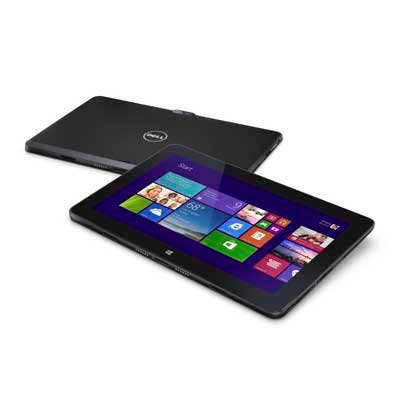
Wireless And Sensors
Here too exist substantive differences. Surface Pro 2 includes only Wi-Fi a/b/g/n and Bluetooth 4.0. To those, Dell (pictured) adds NFC as standard equipment and 3G and 4G LTE mobile broadband as options. Interestingly, Dell has opted not to include sensors for ambient light, movement, orientation and acceleration. Microsoft's device has all of these. Neither device includes a GPS receiver. Microsoft includes a stylus; Dell makes it optional.
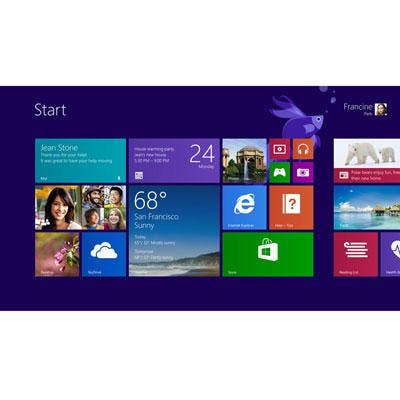
Software
Microsoft ships its high-end tablet with Windows 8.1 Pro. Dell puts either Windows 8.1 or Win 8.1 Pro inside. The major differences between Windows 8.1 versions will matter most to people using the device on a corporate Windows network. The Pro edition includes BitLocker for file security and can join domains, process Group Policies, become a Hyper-V client, boot from virtual images and host Remote Desktop sessions. Of course, core Windows functions exist on both, including a Desktop mode with support for multiple windows, the ability to run multiple instances of the same application and to run legacy x86 apps. Neither Windows 8.1 nor the Pro version can create Windows To Go sessions; that's a feature reserved for Windows 8.1 Enterprise.
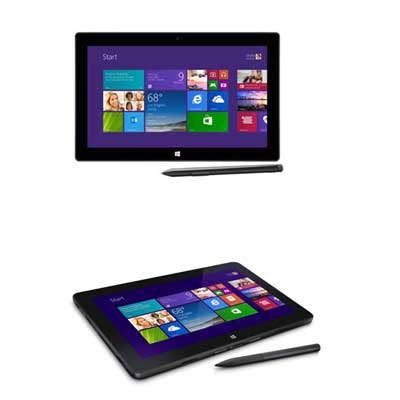
Pricing And Availability
Surface Pro 2 is set to ship on Oct. 22. List pricing will start at $899 for the entry-level SKU with 4-GB RAM and a 64-GB SDD (36 GB of which is occupied by Windows). The Venue 11 Pro starts at $499 with 2-GB RAM and a 32-GB SSD. Availability is set for November.
The choice between tablets from Dell and Microsoft boils down to the intended end-user and their environment. Either machine is powerful enough and offer appropriate accessories to serve as a laptop replacement. And both are available in expansive configurations to accommodate power execs on the go. With the inclusion of Windows 8.1 Pro, Microsoft's high-end tablet can join and be managed as part of a domain, making it a strong choice for the enterprise. Yet Dell offers the advantage of a replaceable battery and IT-serviceable storage and memory. And its processor options and price-points allow for more tailoring to specific needs and budgets.